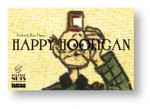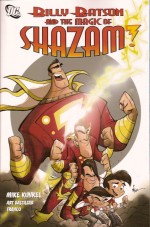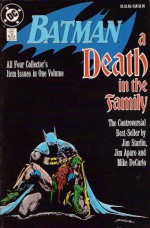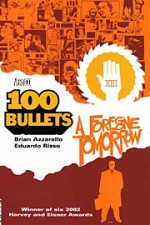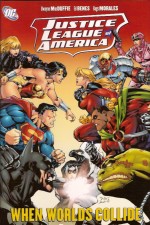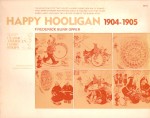
By Stan Lee, John Romita, John Buscema, Jim Mooney and various (Marvel)
ISBN: 978-0-7851-1865-7
This fourth exceptionally economical monochrome volume of chronological Spider-Man adventures sees the World’s Most Misunderstood Hero through another rocky period of transformation as the great second era of Amazing Arachnid artists comes to a close. Although the elder John Romita would remain closely connected to the Wall-Crawler’s adventures for some time to come it would be – apart from a brief return after the book had passed its first centenary – his last time as lead illustrator on the series.
Stan Lee’s scripts were completely in tune with the times – as seen by a lot of kid’s parents at least – and the increasing use of pure soap opera plots kept older readers glued to the series even if the bombastic battle sequences didn’t. The Amazing Spider-Man was a comic-book that matured with or perhaps just slightly ahead of its fan-base.
Thematically, there’s still a large percentage of old-fashioned crime and gangsterism and an increasing use of mystery plots. The dependence on costumed super-foes as antagonists was finely balanced with thugs, hoods and mob-bosses, but these were not the individual gangs of the Ditko days. Now Organised Crime and the Mafia analogue The Maggia were the big criminal-cultural touchstone as comics caught up with modern movies and the headlines.
This volume (reprinting Amazing Spider-Man #66-89 and Amazing Spider-Man Annual #5) kicks off with a sinister two-part tale featuring one of Steve Ditko’s most visually arresting villains. ‘The Madness of Mysterio’ and ‘To Squash a Spider’ (issues #66-67, by Lee, Romita, Don Heck, Mike “DeMeo†Esposito, and Jim Mooney) saw the master of FX illusion engineer his most outlandish stunt on our hero, whilst in the background the amnesiac Norman Osborn slowly began to regain his memory.
This plot thread would culminate in the first return of the Green Goblin, but frustratingly, even though there’s plenty of brooding build-up here you won’t find the actual culminating story (which appeared in the abortive magazine venture Spectacular Spider-Man #2) in this volume. Perhaps more interestingly, this yarn introduced Randy Robertson, college student son of the Daily Bugle’s city editor and one of the first young black regular roles in Silver Age comics. Lee was increasingly making a stand on Civil Rights issues at this time of unrest and Marvel would blaze a trail for African American characters in their titles. There would also be a growth of student and college issues during a period when American campuses were coming under intense media scrutiny…
However before that another mystery in the Webspinner’s life was cleared up. Amazing Spider-Man Annual #5 by Lee and his brother Larry Lieber (with inking from Esposito – still in his clandestine “Mickey DeMeo†guise) revealed the secret behind the deaths of ‘The Parents of Peter Parker’, an exotic spy-thriller which took Spider-Man to the Algerian Casbah and a confrontation with the Red Skull. Nit-pickers and continuity-mavens will no doubt be relieved to hear that the villain was in fact the second Soviet master-villain who featured in Captain America revival of 1953-1954, and not the Nazi original that Lee and Co had clearly forgotten was in “suspended animation†throughout that decade when writing this otherwise perfect action romp and heartstring-tugging melodrama…
That annual also provided a nifty Daily Bugle cast pin-up, a speculative sports feature displaying the advantages of Spider powers, a NYC street-map of the various locations where the Spidey saga unfolded and a spoof section displaying how the Wallcrawler would look if published by Disney/Gold Key, DC or Archie Comics, or drawn by Al “Li’l Abner†Capp, Chester “Dick Tracy†Gould and Charles “Peanuts†Schulz. ‘Here We Go A-Plotting!’ a comedic glimpse at work in the Marvel Bullpen, uncredited but unmistakably drawn by the wonderful Marie Severin concludes the joyous Annual extras included here.
Issue #68 (by Lee Romita & Mooney) began a long-running saga featuring the pursuit of an ancient stone tablet by various nefarious forces, beginning with The Kingpin who exploited a ‘Crisis on the Campus!’ to steal the artifact. Meanwhile Peter Parker, already struggling with debt, a perpetually at-Death’s-Door Aunt May, relationship grief with girlfriend Gwen Stacy and no time to study was accused of not being involved enough by his fellow students…
‘Mission: Crush the Kingpin!’ further tightened the screws as the student unrest exploded into violence and the corpulent crime czar framed the hero for the tablet’s theft. Hounded and harried in ‘Spider-Man Wanted!’ he nevertheless managed to defeat the Kingpin only to (briefly) believe himself a killer when he attacked J. Jonah Jameson in a fit of rage causing an apparent heart attack in the obsessive, hero-hating publisher.
At his lowest ebb, and still possessing the tablet, he was attacked by the sometime Avenger Quicksilver in ‘The Speedster and the Spider!’ in issue #71, before John Buscema came aboard as layout-man in ‘Rocked by: the Shocker!’
No sooner did Spider-Man leave the stone tablet with Gwen’s dad – Police Chief Stacy – than the vibrating villain attacked, stealing the petrified artifact and precipitating a frantic underworld Civil War as the Maggia dispatched brutal enforcer Man-Mountain Marko to retrieve it at all costs in ‘The Web Closes!’ (by Lee, Buscema, Romita & Mooney).
Upstart lawyer Caesar Cicero was making his move to depose aged Don of Dons Silvermane, but the ancient boss knew the secret if not the methodology of the tablet and had abducted biologist Curt Connors and his family to reconstruct the formula on the stone and bring him ultimate victory.
Unfortunately nobody but Spider-Man knew that Connors was also the lethal Lizard and that the slightest stress could free the reptilian monster to once more threaten all humanity. ‘If this be Bedlam!’ (illustrated by Romita & Mooney) led directly into ‘Death Without Warning!’ as the unleashed power of the tablet caused a cataclysmic battle that seemingly destroyed one warring faction forever, decimated the mobs, but also freed a far more deadly monster threat…
Amazing Spider-Man #76 saw John Buscema become full penciller because ‘The Lizard Lives!’ and the concluding ‘In the Blaze of Battle!’ found the Webspinner trying to defeat, cure and keep the tragic secret of his friend Connors all whilst preventing the guest-starring Human Torch from destroying the marauding rogue reptile forever, whilst #78’s ‘The Night of the Prowler!’ featured (probably) John Romita Junior’s first ever creator credit for “suggesting†the tragic young black man Hobie Brown, who turned his frustrations and inventive genius to criminal purposes until set straight by Spider-Man in the concluding ‘To Prowl No More!’
With #80 a policy of single-issue adventures was instituted: short snappy thrillers that delivered maximum thrills and instant satisfaction. First off was a return for the Wallcrawler’s first super-foe in ‘On the Trail of the Chameleon!’ followed by the action-packed if somewhat ridiculous ‘The Coming of The Kangaroo!’ (a clear contender for daftest origin of all time) and Romita senior returned as penciller for ‘And Then Came Electro!’
There were big revelations about the Kingpin in the three part saga that featured in issues #83-85 with the introduction of ‘The Schemer’ (Lee, Romita & “DeMeoâ€), a mysterious outsider determined to destroy and usurp the power of the sumo-like crime-lord. ‘The Kingpin Strikes Back!’ (art by Romita, Buscema & Mooney) and ‘The Secret of the Schemer!’ changed the Marvel Universe radically, not just by disclosing some of the family history of one of the company’s greatest villains, but also by sending Peter Parker’s eternal gadfly Flash Thompson to a dubious fate in Vietnam…
‘Beware… the Black Widow!’ saw Romita and Mooney redesign and relaunch the Soviet super-spy and sometime Avenger in an enjoyable if highly formulaic misunderstanding clash-of-heroes yarn with an ailing Spider-Man never really endangered, whilst the next issue ‘Unmasked at Last!’ found Parker, convinced that his powers were forever gone, expose his secret identity to all the guests at his girlfriend’s party…
Using the kind of logic and subterfuge that only works in comics and sitcoms Parker and Hobie Brown convinced everybody that it was only a flu-induced aberration in time for the fateful return of the Webslinger’s greatest foe in #88 as the Romita & Mooney art team bow out on a high in ‘The Arms of Doctor Octopus!’
The deranged scientist had gained telepathic control of his incredible mechanical tentacles and sent them on a rampage of destruction through New York. Freeing himself from prison the villain then seized a jet full of Chinese dignitaries and demanded a multi-million dollar ransom until once more defeated and apparently destroyed by Spider-Man.
This volume ends in the most annoying manner possible with Amazing Spider-Man #89, a turning point in the series as the undisputed master of super-heroic anatomy Gil Kane assumed the penciling role (inked by Romita) for ‘Doc Ock Lives!’ wherein the villain attacked once more and hurled the overwhelmed hero to his doom… the result of which you’ll need volume 5 to see.
Moreover that selfsame climatic conclusion signalled the tragic demise of a major character and a genuine turning point in the history of the Amazing Arachnid.
Seriously guys: you couldn’t afford 21 more pages to give this book a proper narrative resolution? What kind of editors or publishers do that to valued fans and especially any new readers you might be cultivating?
Despite that major qualification this is still a fantastic book about an increasingly important teen icon and symbol. Spider-Man at this time became a permanent, unmissable part of many youngsters’ lives and did so by living a life as close to theirs as social mores and the Comics Code would allow. Blending cultural authenticity with spectacular art, and making a dramatic virtue of the awkwardness, confusion and sense of powerlessness that most of the readership experienced daily resulted in an irresistibly intoxicating read, delivered in addictive soap-opera instalments, but none of that would be relevant if the stories weren’t so compellingly entertaining. This book is Stan Lee’s Marvel and Spider-Man at their peak.
© 1968, 1969, 1970, 2005 Marvel Entertainment Group, Inc. All rights reserved.


